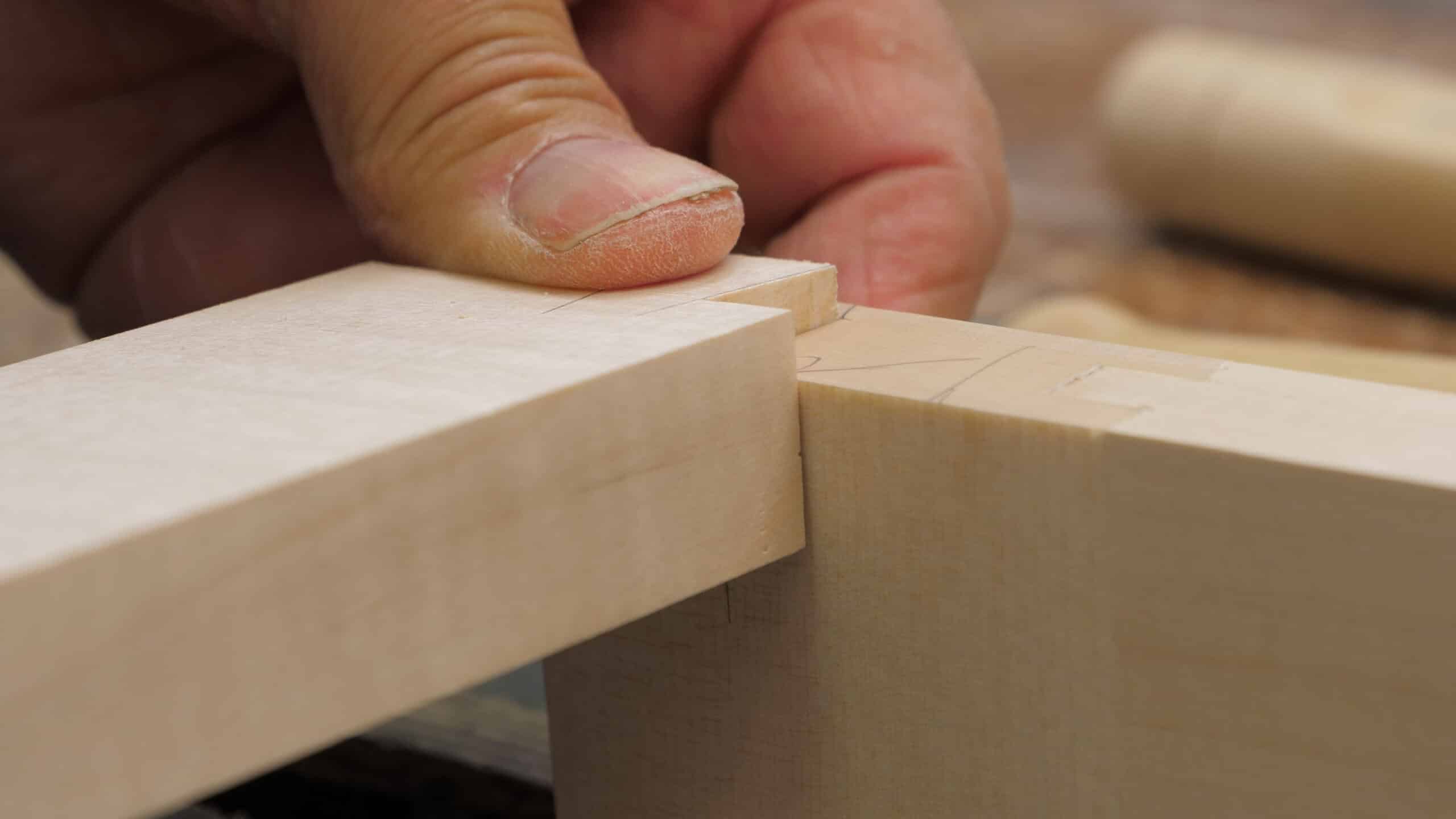Bedside Cabinet: Episode 7
Posted 27 December 2017
This is an episode in a paid series. Want to watch it? You just need to sign up as a paid member, and you can enjoy this video and many other videos we think you will love.
The top rails provide structural strength by dovetailing into the side panels. Once they are cut, the bottom rail assembly is cut to size and fixed in place before the housing to receive the lowermost panel is cut.


It seems counter intuitive to me to rout the raised panel to make room for a plywood base. I dont understand why the bearer wasn’t positioned an inch lower and the panel work preserved?
Thanks,
Craig
I think that Paul took into account the groove on the panel rail. If he made the housing dado for plywood below, then it would’ve weakened the walls, anything lower than that would have made an awkward step down inside the cabinet. Just my opinion.
I think if the panel is fitted ina groove it adds strength to the carcass. Otherwise it’s just floating on a support. I did think it was unusual when I saw this.
I enjoy seeing Paul working in maple – such as pairing the crisp dovetail shoulders on the top rails – shoulders that will never see the light of day once the lid goes on! That outtake belongs in the “Art of Woodworking” playlist on YouTube.
It’s not clear to me why the length of the bottom rail and bearer need to be sized in place – why not size them along with the dovetailed braces and kick board shoulders?
Can someone help a relative novice? The video shows a piece inserted under the bearer but I’m unable to see it on Paul’s plans. Granted, my eyesight and reasoning abilities are fading, but…
The part I believe you are talking about is on drawing D. It has 2 screws shown on the drawing and is the part which takes the weight of the plywood base at the front.
I think dicksters’ question relates to the material list. I see the component on the drawing, but not shown/named in the cut list.
We are looking into this and will get back with an update soon.
“Just a housing dado, really”.
For an absolute beginner who’s only seen shoddy box store mdf frame construction it’s not so simple to figure out how these panels come together. In fact it took me some weeks working out i my head how the joinery might look like on the bottom panel to side. Of course the bottom also bears on the inside of the bottom rails! I’m glad these details live on for us to see and practice. Thanks to Paul and the team.
Plywood and screws? Oh dear, is our Paul turning into a “ Normite”? (How many times has Paul said that he didn’t think much of plywood in previous videos? ). That little triangular hole where the plywood crosses the bevel section of the floating panels doesn’t look very nice.
At approximately 30′ in, Paul uses his knife repeatedly to deepen the bottom housings as he clears material with a router. Could a chisel have been used to deepen the housing, rather than going back with the knife, or is that area too weak for chiseling because of the groove in the stile?
The sped-up sawing at 42′ sounds like an unhappy beagle.
@DRDEE1280 I think ply was a good choice here. It isn’t a key exterior surface, it is stable, and it is strong (this surface will be just about the highest wear element of the piece, other the drawer runners). The downside of ply is staining or dying it, but it would be fine to leave this without color and will brighten the interior. The alternative would require a full frame, which would be fine, but it also likely to mean there will be grooves around the perimeter where little things can fall in vs. the perfectly flat, flush bottom that Paul achieved with ply. It’s a good tradeoff.
Hello Ed,
You could use a chisel carefully. Paul often uses the knife in this instance as it is easier to not overshoot the depth.
Damn, at about 16:00, he offers the wrong dovetail to the recess, but still ends up with something tight then. That Paul Sellers’ perfection in the saw cuts !